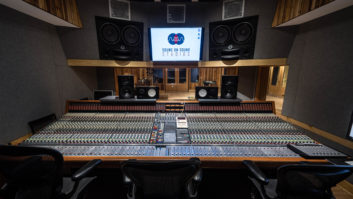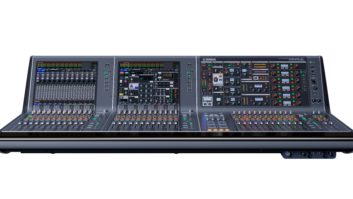When mixing your own music in your own studio, you have complete creative control. You can experiment with different ideas, try weird stuff and generally work without any constraints. “Hmm…I wonder what would happen if I put the lead vocal through a ring modulator? I know it’s a folk song, but hey…” If your ideas work out, you’re a genius. If not, nobody will ever know.
It’s a different story when you’re mixing for a client. You probably want to avoid getting too far out with your ideas, and you need to be receptive to the client’s input. You probably shouldn’t fight too hard against something that you think is a bad idea. After all, it’s their project. Such situations require diplomacy, and you need to keep a cool head, even if what the client is saying or suggesting seems flat-out wrong.
Early in my studio career, when I was not particularly savvy in dealing with clients, I lost my temper with one after many attempts to logically explain why I thought certain suggestions were ruining the song. Although I don’t remember precisely what the disagreement was, my subsequent firing clued me in that being confrontational was probably not a wise tactic.
Subtle persuasion is almost always the best way to go. Play back the part in question, first with your client’s approach and then yours, and hope they’ll hear your point.
Read More Mix Blog Studio: Sweating the Details
I recall being in a jingle session many years ago and seeing an engineer resort to subterfuge to deal with an obviously bad suggestion from a client to turn up a particular instrument. The engineer made a show of turning a knob on the console, which actually wasn’t controlling anything, and asked, “How’s that?” The client said, “Oh, that’s much better.” Later, when the client had left, the engineer referred to that faux volume control as the “placebo knob.”
Somewhere in between working on your own project where you have total creative control and working for a client where you have very little, is a weird middle ground: collaborating with others, such as bandmates, in a situation where there’s no clear leader.
Presumably, if your group is at the point of recording an album’s worth of material, you will already have found a way to coexist creatively with your bandmates. Still, when you get into the studio, especially during the mixing process, creative differences often get magnified because the decisions you make are permanently memorialized in your mix.
It’s a problematic dynamic, and unless you’re using a democratic model, where you vote to resolve disagreements, often the person with the most forceful personality—and not necessarily the best ideas—will win out. On the flip side, if you have to debate and vote on every contested decision, you might end up with a muddled result, and it’s going to severely slow you down.
There are some advantages to the collaborative process, mainly that a group of people offers a broader range of perspectives and ideas than a single person would. It’s possible you could come up with exciting results because of that—if you don’t kill each other first.
If I had to rank the three situations: Working with a client would be #1 (for the financial rewards, if not the creative ones), working on my own material would be #2, and working in a collaborative group would definitely be in last place.






